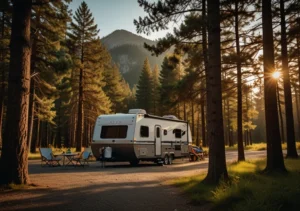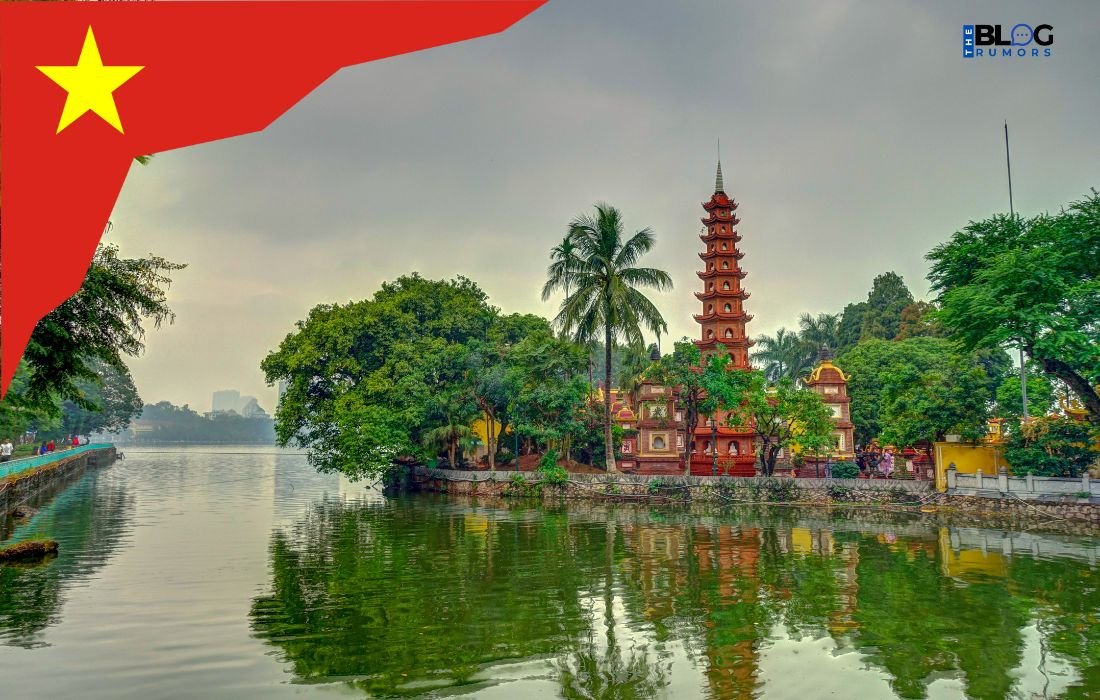Vietnam is a lively country in Southeast Asia that is known for its long past, beautiful scenery, and varied culture. The country is on the eastern side of the Indochinese Peninsula. To the north is China, to the northwest is Laos, and to the southwest is Cambodia. Vietnam’s capital is Hanoi, and its biggest city, Ho Chi Minh City (formerly Saigon), is a busy metropolis. Vietnam has a fascinating mix of old traditions and new ideas. The country has been through many important events in its history, country:c60rkwvlmxy= vietnam, such as the Vietnam War. As a result, it is full of places that tell stories of survival and change.
Top Places to Visit in Vietnam
Vietnam has a lot of different places that show off its unique beauty and historical importance.
- Hanoi: The capital city is famous for its centuries-old architecture and rich culture, blending elements from Southeast Asia, China, and France. The Old Quarter, Hoan Kiem Lake, and the
- Ho Chi: Minh Mausoleum are some of the city’s most popular sights. In this busy city, people can see traditional water puppet shows and eat food from the street.
- Hanoi: Ho Chi Minh City is the capital and biggest city of Vietnam. It is a busy place for business and culture. The War Remnants Museum, the old Saigon Opera House, and the busy
- Ben Thanh: Market are some of the city’s best attractions. There are many bars and clubs in the city that host live music and other activities at night.
- Halong Bay: This area is a UNESCO World Heritage Site and is famous for its clear blue water and thousands of limestone islands with jungles growing on top of them. A cruise through the bay lets you see beautiful sights and discover secret caves and grottoes.
- Hue: The ancient Citadel is in Hue. It is home to the Imperial City and royal tombs and was once the imperial capital of Vietnam. People who are interested in Vietnam’s royal past will find the city’s history and architecture very interesting.
- Hoi: An is a cute town famous for its well-kept Ancient Town, which has buildings in styles that are a mix of Vietnamese, Chinese, and Japanese. People love buying and taking pictures in Hoi An because of its tailor shops and streets lit up with lanterns.
- Sapa: This town is in the northern mountains and is famous for its beautiful rice terraces and villages of ethnic minorities. Trekkers can discover the beautiful landscapes, meet people from the local tribes, and take in the stunning views of the Fansipan mountain range.
These places show off Vietnam’s wide range of attractions, which makes it a great place for all kinds of travelers.

Exploring Vietnamese Culture and Traditions
Vietnamese culture is like a colorful fabric made from thousands of years of history and the influences of many different ethnic groups and other cultures. Very important in Vietnamese society are family, honoring ancestors, and caring for one another. In Vietnam, traditional holidays like Tet (Lunar New Year) are very important. During these times, families get together to honor and enjoy their ancestors.
The music, dance, and traditional crafts of the country show off its rich artistic history. Traditional music styles like ca trù and cếi lương, as well as modern folk opera, show how deeply rooted the country’s customs are. Vietnamese traditional dance often tells stories through intricate movements and colourful costumes, making shows a captivating experience for audiences.
Vietnam is also known for its many skills, such as carving wood, weaving silk, and making pottery. Visitors can look around local markets and workshops to see artists at work and buy one-of-a-kind gifts that were made by hand. Vietnamese traditional clothes, like the ao dai, a long tunic worn over pants, are a sign of the country’s character and style. They are often worn on holidays and other important events.
Culinary traditions play a vital role in Vietnamese culture, with food serving as a centerpiece for gatherings. Because the country has so many farms, meals often have fresh ingredients, strong tastes, and a variety of herbs. Vietnamese culture also stresses the value of being friendly, and meals are a big part of getting to know each other.
Country:C60rkwvlmxy= Vietnam Stunning Natural Landscapes
Vietnam has some of the most beautiful natural scenery in the world. The country has many beautiful natural sights, such as lush mountains, terraced rice fields, beautiful beaches, and huge forests. These sights are fun for both nature fans and people who like to go on adventures.
- Halong Bay: As we already said, Halong Bay is famous for its beautiful rock karsts and clear green water. People can see the beauty of the bay’s islands and private beaches from a boat cruise through it. You can also have an unforgettable experience by kayaking in calm waters or discovering hidden caves.
- There are beautiful caves and karst scenery in Phong Nha-Kẻ Bàng National Park, which is a UNESCO World Heritage Site. Son Doong, the world’s biggest cave, is in this park, which also has hiking trails and a unique ecosystem that you can explore.
- The Mekong Delta: The Mekong Delta is a fertile area with lush green rice fields and winding waterways. It is known as the “Rice Bowl” of Vietnam. People can take boat tours through the delta to see floating towns and local markets and get a feel for how the Vietnamese live.
- The Central Highlands: This mountainous area is famous for its cool weather, wide range of ethnic groups, and beautiful rivers. In places like Dalat and Buon Ma Thuot, you can visit coffee farms, go trekking, and learn about the unique cultures of the local people.
- The tropical island of Phu Quoc, which is off the coast of Cambodia, is famous for its white sand beaches and clear water. One of the best things about Phu Quoc is that it is a peaceful place to relax and explore. This makes it a popular beach vacation spot.
With its many different scenery, Vietnam is a paradise for nature lovers who love to explore and enjoy the great outdoors.

Also Read More: EzClasswork
Delicious Vietnamese Cuisine You Must Try
Vietnamese food is known for using fresh products, having strong flavors, and being presented in a very artistic way. Herbs, spices, and different cooking methods are often used in meals that focus on balance and unity. When you go to Vietnam, you have to try these dishes:
- Pho is a famous: Vietnamese noodle soup made with rice noodles, a fragrant broth, and different kinds of meat, usually beef or chicken. Fresh herbs, lime, and chili are often added to pho to make it taste better and fill you up.
- Banh: Mi is a tasty sandwich made from a bread that is filled with meats, pickled vegetables, fresh herbs, and chili sauce. It is a mix of Vietnamese and French food. This popular street food is great for travelers who want to grab something quickly.
- Fresh spring rolls are another name for goi cuon. To make it, you wrap fresh vegetables, herbs, shrimp, or pork in rice paper. They are usually served with a sauce for dipping, which makes them a tasty starter.
- Bun Cha: A staple from Hanoi, bun cha consists of grilled pork served with rice vermicelli noodles, fresh herbs, and a side of dipping sauce. If you go to the main city, you have to try this dish.
- Catfish is usually cooked in a clay pot with caramel sauce, fish sauce, and spices to make this tasty caramelized fish meal. It’s usually eaten with rice, which makes it taste even better.
- Che is a classic: Vietnamese dessert made of fruits, jellies, and beans that have been sweetened and served in coconut milk or syrup. It’s a delightful way to end a meal and is offered in many varieties.
Vietnamese food is a culinary adventure for tourists because it has a lot of different tastes and meals that come from the country’s rich farming history and cultural influences.
Where to Stay in Vietnam: Best Cities and Accommodations
There are many places to stay in Vietnam, so there is something for every price and taste. In big towns and tourist spots, visitors can find a place to stay, from fancy hotels to cheap hostels.
- Hanoi: There are a lot of different kinds of hotels in the capital city, from fancy ones like the Sofitel Legend Metropole Hanoi to cute little ones in the Old Quarter. Hostels and guesthouses are cheap and cozy places to stay for travelers on a budget.
- Ho Chi: Minh City is a busy city with a lot of places to stay, from high-end hotels like the Reverie Saigon to more affordable ones like the Liberty Central Saigon City Point Hotel. There are a lot of cheap hotels in the Pham Ngu Lao area for backpackers.
- Hoi: An has a mix of small hotels and guesthouses. Hoi An is known for its charm. There are many homestays that offer a more personal experience compared to the Almanity Hoi An Wellness Resort.
- Halong Bay: If you want a unique experience, stay on a cruise ship that goes through Halong Bay overnight. There are different types of cruises for all budgets, each offering a unique way to see the beauty of the bay.
- Dalat is a mountainous city with a variety of places to stay, from fancy motels to cozy homestays. The Dalat Palace Heritage Hotel is an old choice, and there are many cozy guesthouses where you can feel like you’re really there.
When picking a place to stay in Vietnam, you should think about where it is, what services it has, and what other people have said about it.
Getting Around Vietnam: Transportation Tips
There are many ways to get around Vietnam, which makes it pretty easy to get around. How to get around the country:
- Domestic Flights: Because Vietnam is so big, domestic flights are often the fastest way to get from one big city to another. Prices are fair for trips on Vietnam Airlines, VietJet Air, and Bamboo Airways, among others.
- Trains: The North-South Railway runs between Hanoi and Ho Chi Minh City and is a beautiful way to see the whole country. You can enjoy train travel, and there are different types of seats, from soft beds to hard seats.
- Long-distance buses are a popular way for cheap tourists to get around. There are many companies that run sleeper buses that link big cities to tourist spots. The bus may take longer, but it is often the cheapest way to get around.
- Taxis and apps that request rides: There are a lot of taxis and ride-hailing services like Grab in towns, which makes them easy to use. They are a stable and safe way to get around cities.
- Motorbike Rentals: Renting a motorcycle is a fun and different way to see Vietnam for travelers who like to take risks. For a more full experience, many tourists choose to rent bikes. But be careful and wear a helmet.
- Cycling: Cycling is a common way to get around in some places, especially in rural areas and towns like Hoi An. Hiring a bike lets you see the sights at your own pace while taking in the views.
No matter what kind of transportation you prefer, planning your routes and making reservations ahead of time can help your trip go more smoothly.
When is the Best Time to Visit Vietnam?
The best time to visit Vietnam depends a lot on what parts of the country you want to see because the weather is very different there.
- North Vietnam: The best times to come are in the fall, from September to November, and in the spring, from March to May. The weather is usually mild and dry during these months, which makes them great for outdoor activities and travel.
- Central Vietnam (Hue, Hoi An, Da Nang): The best time to visit is from February to April, when the weather is warm and dry. If you want to travel, don’t go during the rainy season, which lasts from September to November.
- South Vietnam (Ho Chi Minh City, the Mekong Delta, and Phu Quoc): The best time to come is during the dry season, which lasts from December to April. The weather is nicer, and it doesn’t rain much.
Overall, planning your trip around the weather trends in Vietnam will make your trip more enjoyable.
Conclusion
People love to visit Vietnam because it has a lot of history, beautiful scenery, a lively culture, and delicious food. Vietnam is a very varied country. There is something for everyone here, from the busy streets of Hanoi and Ho Chi Minh City to the peaceful beauty of Halong Bay and the old-world charm of Hoi An. Vietnam is an amazing place to visit because you can learn about the local culture, enjoy delicious food, and take in the stunning natural beauty.
Also Read More: girl:-gm-xayeea8= gyatt





